How horses taught me to trust my gut
Charlie Needs a Friend - Part 1
Deborah Ann Lucas
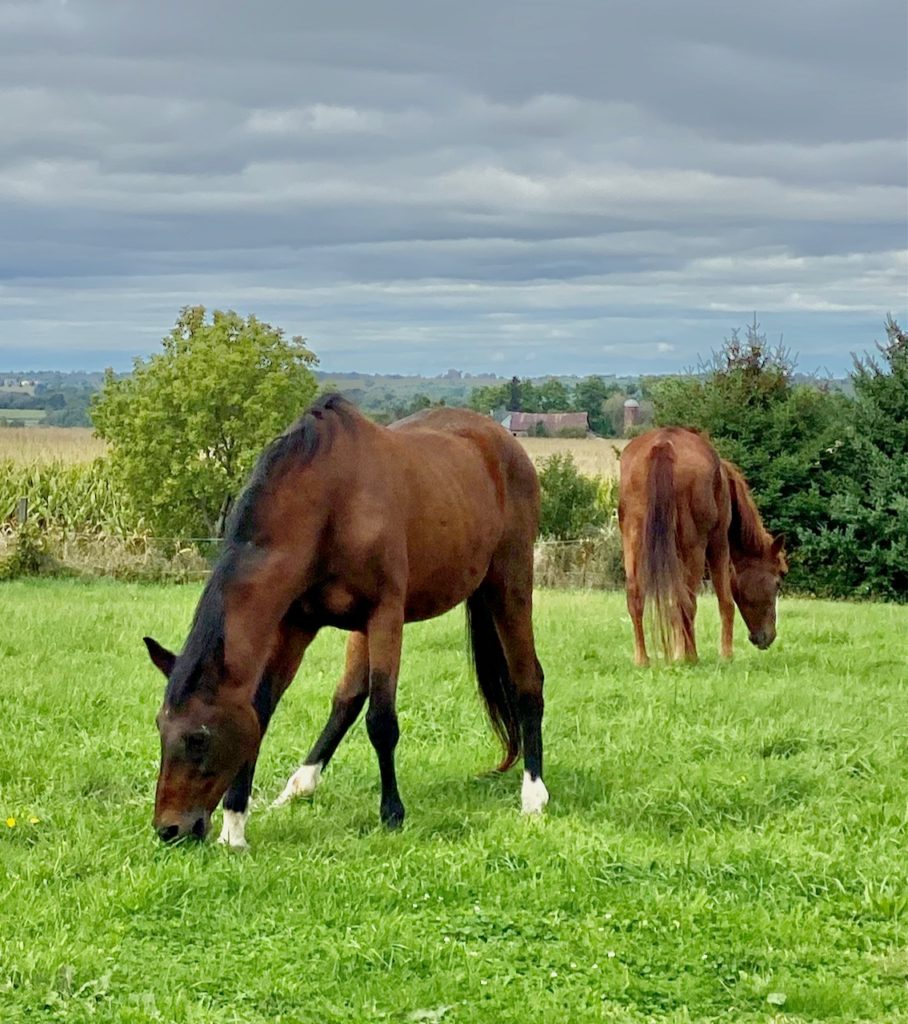
After losing Sonia
Losing my horse Sonia last October really tore me up. She was 28 and had been with us since the day she was born. Like all the other horses we’ve lost over the 25 years, we buried her in the pasture at the edge of the woods. Each one is a terrible loss that I feel deeply. But I’ve learned when our horses get old to let them go instead of prolong their suffering to avoid my pain. I trust my gut to know when to call the vet.
But Losing Sonia was a lot harder on our horse Charlie who is all alone. He’s lived his 25 years in the same herd—once six horses, it has now dwindled to one. I try to spend as much time as I can with him. But I can’t be in the barn every minute of the day and night like another horse can. So, I really don’t count as a member of his herd (although I like to think of myself that way).
Since Sonia’s death, Charlie has burned his misery into me. Each time I leave him to return to the house, he screams at me to return to his side. I can’t take seeing him in so much pain and I know there is only one solution. He needs another horse to form a new herd, a new family.
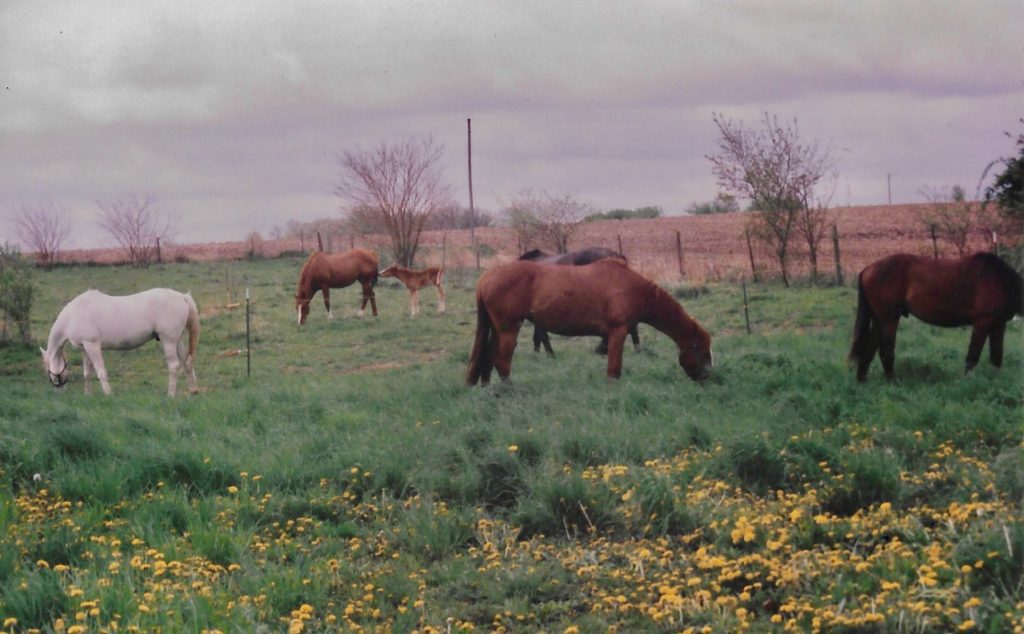
Why horses need a herd
First, let me explain why it is so important for a horse to have a herd. They are “prey” animals, grass-eaters, dinner to any hungry predator that might think they can get past flying and thrashing hooves in order to fill an empty belly. Sure, we don’t have many wolves, mountain lions or bears in our area, but Charlie doesn’t know that. He only knows that he is alone.
Even though the big cats don’t often venture near our farm, we do have packs of coyotes that might be willing to take on a lone horse, especially an older one. A horse is most vulnerable when he lies down to sleep. It takes time and effort to scramble to his feet, and while he is down, his throat is very accessible and his hooves nearly useless.
To help Charlie feel safe enough to sleep, we close him up in the barn at night. But I can tell it’s not working when I d0n’t see pine shaving bits from his bedding on his side. Horses can rest with eyes closed while standing (they have special ligaments in their legs that keep them from falling) but it’s not the same as a deep sleep. They need to lie down for that.
Charlie walking crooked from nerve damage caused by EPM, aloine in a pasture looking for family
Charlie at risk
The combination of not getting enough sleep and the stress from the misery of being alone, Charlie is at risk of all kinds of illnesses. He’s already struggling with two issues: a cough from COPD and trouble standing because of nerve damage from EPM. I’m not ready to lose him, so I’ve decided to do whatever it takes to get him a companion. Nothing less will do.
The problem is, our coffers are dry after all the vet bills and meds and supplements we’ve needed to nurse Charlie through his illnesses and to give Sonia another year of life after she foundered on all four feet from Cushing’s Disease. The few people I know with horses, like me, have no intention of giving one of them up. We need to find the right companion for Charlie, an older horse who is well mannered and easy to handle without costing money I don’t have. But how?
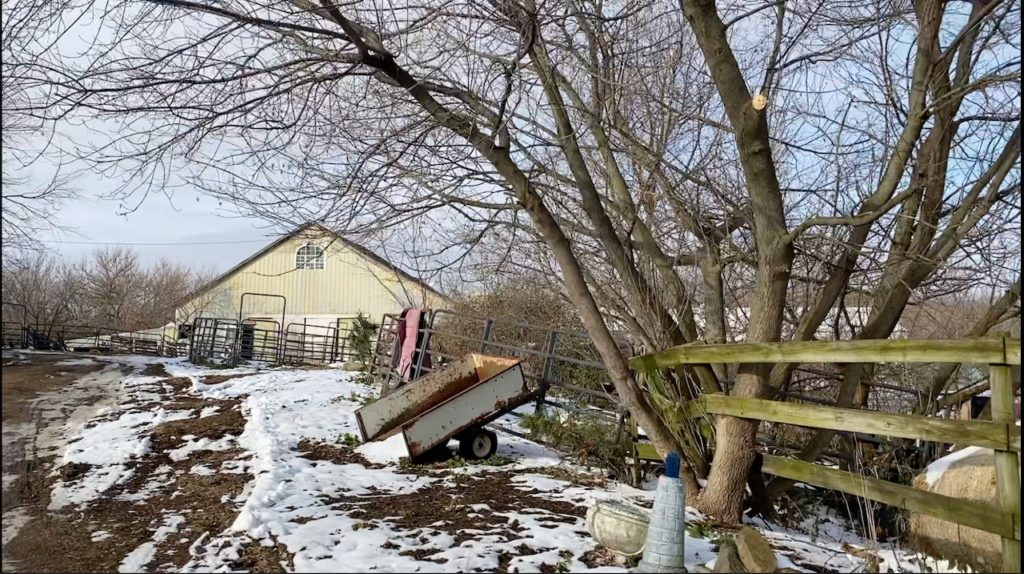
Answered prayers
I had just barely started putting out the word that I needed another horse when my prayers were answered. I got a call from my vet Dr. Kevin Sugden who told me about some Thoroughbred, neglected to near starvation, who were now available for adoption. The Nachusa Grassland Preserve had purchased the farm and needed good homes for nearly a dozen horses before they could raze the barns and dilapidated house to restore the land, adding to their adjacent plot of reserve.
I visited the farm to check out the horses needing rescue and connected with a big bay mare who might be a perfect companion for Charlie. The problem was, I had no way to trailer her home. I’ve had plenty of experience with big Thoroughbreds because my riding horse came off the track too.
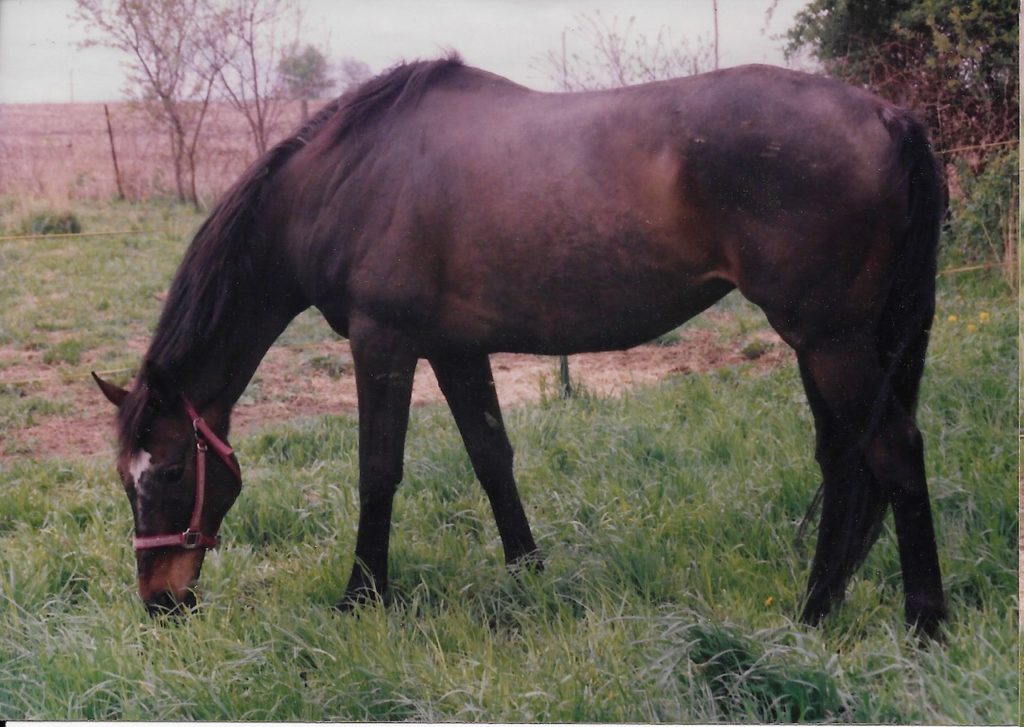
Thoroughbreds
A horse’s height is measured from the ground to the wither, which is the boney point where his neck meets his back. A hand measures four inches.
My first horse Lance, an Off-Track Thoroughbred (OTTB) measured 17-hands which means he was 5’8” tall—not including his neck and head height. He was sold as a 3 YO after he performed poorly at the track (panicking in the gate), then landed in my friend Shae’s hands who trained him as a jumper. She sold him to me a few years later.
When Lance and I first met, our spirits connected. In that first moment, I knew he would be mine. And I would be his, to care for him and to learn with him, for many years and through many adventures. One of those adventures was trailering.
I rode him on high desert trails and learned dressage in clinics. He was so tall that he could easily raise his head way beyond my reach which caused problems with grooming, tacking up and of course trailering. Over the years, I spent hours asking him to lower his head and doing other exercises to build his trust in me, attempting to undo whatever treatment had caused his apprehension. But when it came to him being trailered, I soon learned it wasn’t enough.
The trailer problem
When I first got Lance, we’d already purchased a truck but didn’t yet own a trailer. One time, I wanted to take Lance to a dressage clinic in LA, and our neighbors offered to trailer him for me. They owned and trained Arabians for endurance racing but had no idea what was about to happen. The first time they loaded Lance into their too-short trailer, he freaked out. He hit his head on the ceiling, desperate to escape, and almost knocked himself out. He never did make it to the clinic. After that, I arranged for his previous owner to transport him in a trailer better fitting his size when I wanted to attend a special event. Otherwise, we stayed close to home, riding along mountain trails and through wildflowers across high desert below our house in the foothills.
When we moved a few years later, we decided to transport our now five horses across country ourselves, we bought a 7’3” tall used trailer that we pulled behind our super-cab dually truck. We traveled for two cold and snowy January days through the mountains and across the plains all the way here to Illinois.
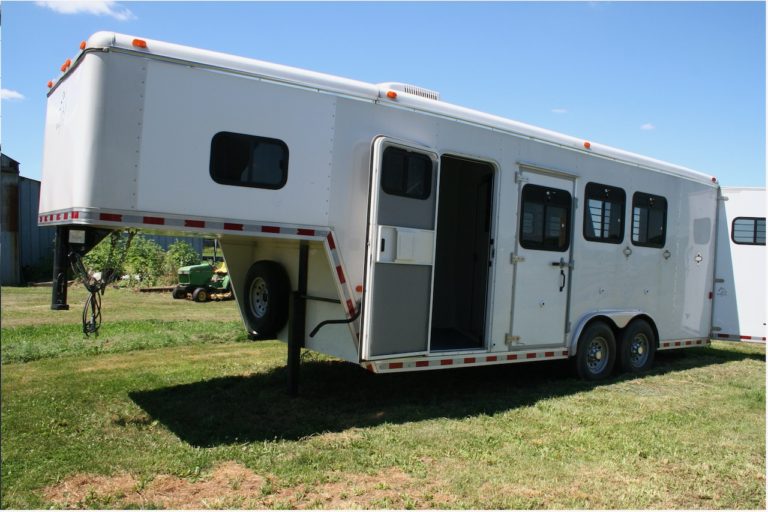
Getting Lance a special trailer
A few years after settling into our farm in Illinois (building fences, repairing the barn, etc.) we discovered problems with old steel trailer. The roof was rusting, and the floorboards were beginning to rot. We began researching different trailer styles and manufacturers when we happened on a Horton three-horse slant-load trailer by chance at the fairgrounds. We were so impressed that we soon special ordered one 8’ tall by 8’ wide for ourselves. Lance loved that trailer and it really came in handy when we had to trailer him to Madison to the vet hospital.
A few years later, Lance died, and eventually we sold the big trailer. I wish we still had it because the mare I now wanted to rescue was almost as tall as Lance and I worried we’d run into the same kind of problems hiring a hauler.
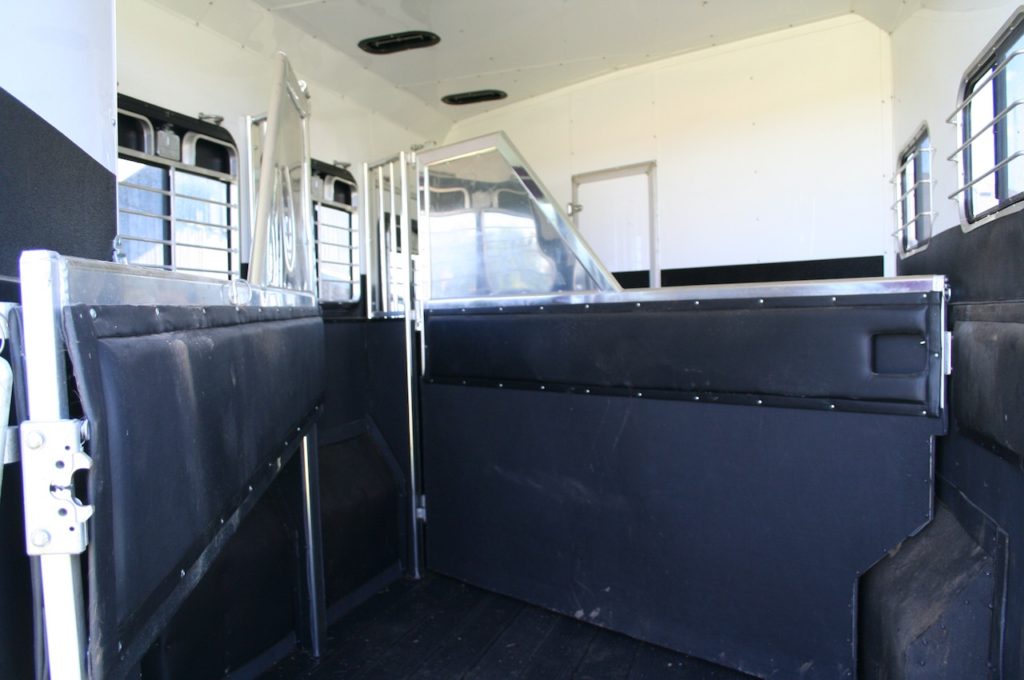
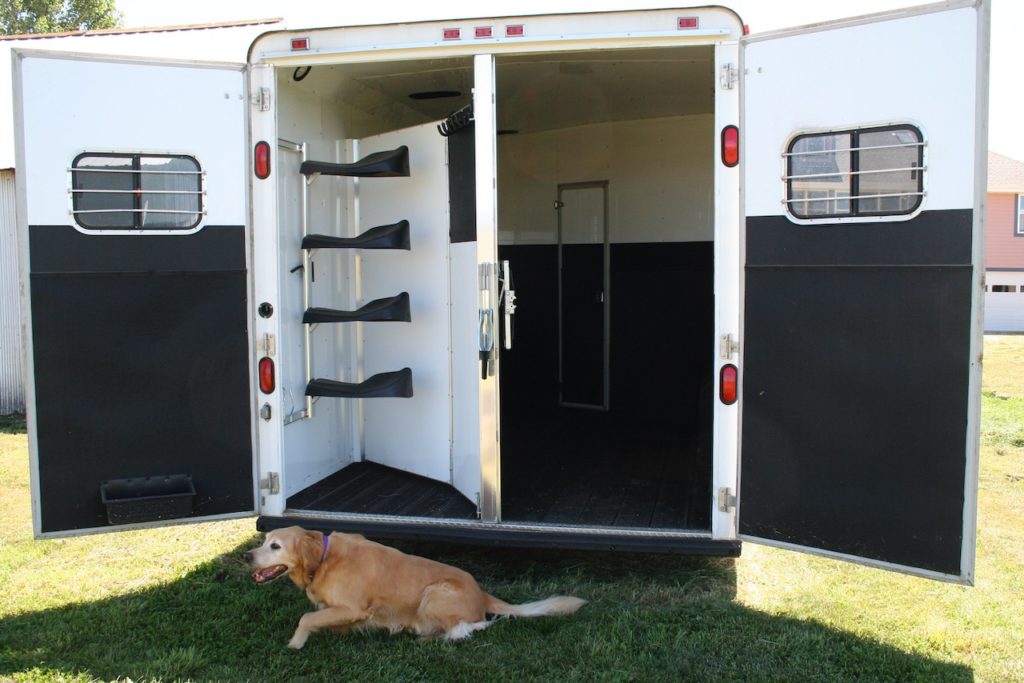
Finding a horse hauler
To start, I called the few horse people that I knew. (We live in an area where cows dominate the pastures.) No one was available to help, but they put me in contact with some people who regularly hauled horses. When I made inquiries, I learned they transported horses and cows in a stock trailer—only 6’7” tall. That’s only 9” above a 17-hand horse’s withers. Two different horse haulers assured me they could handle a tall horse, one even said he’d had a warmblood.
Hot vs. cold blooded
In the horse world, experts use these terms to group different breeds by temperament.
Hot-blooded horses like Arabian and Thoroughbred are high-spirited, bold, and quick learners bred mainly for speed and agility for sports requiring long distances.
Draft horses were developed for draft and agricultural work. These gentle giants are referred to as cold-blooded.
Warmbloods are a classification of breeds from Europe that originated from crossbreeding a draft horse for their power and calm temperament with a breed like Thoroughbred or Arabian for their speed and agility. These breeds, like Dutch Warmblood, Hanoverian, Holsteiner, and Trakhener dominate sports like dressage, driving and eventing.
Quarter Horses are like the American warmblood. They have a similar easy-going temperament but were developed for cattle-ranch work but also compete in short distance racing (quarter mile), and western disciplines like reining, team penning and barrel racing.
In addition to acquiring general horse knowledge, I soon learned I would need to study long and hard to understand all the breeds, each with their own vocabulary, equipment, and customs. This also applies to each discipline—racing, jumping, roping, dressage—each having a unique culture, not unlike that of football vs. basketball. The equine community is rich and diverse. The equine community is rich and diverse so it’s hard to know everything about all of it.
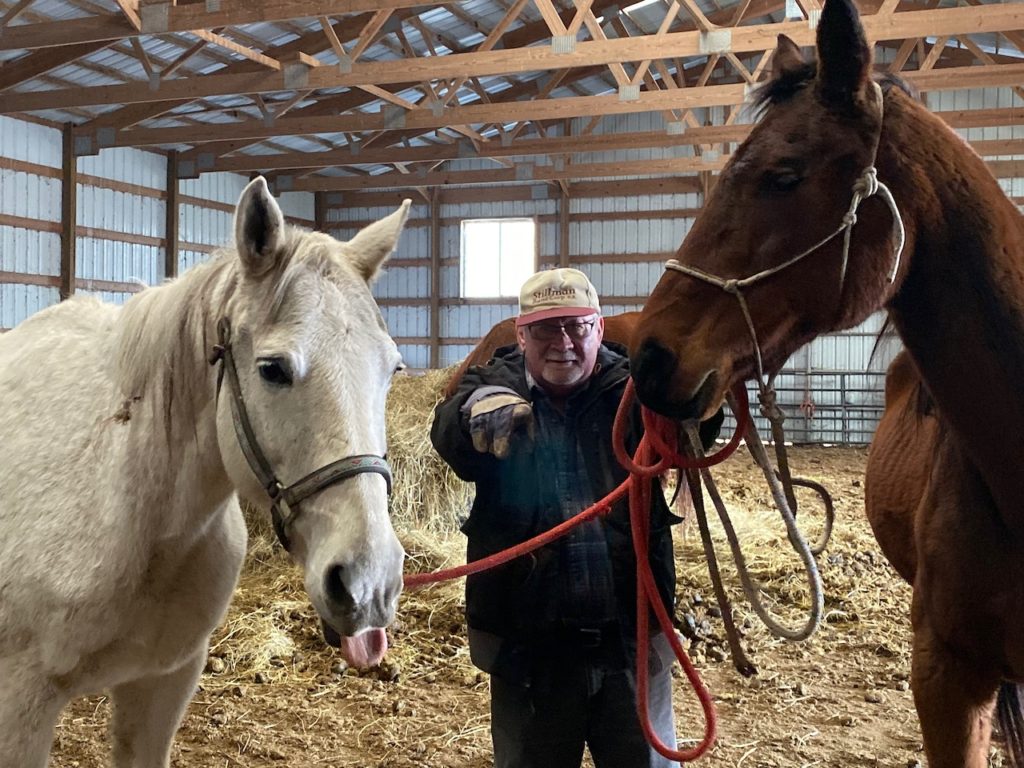
Trusting my gut
The people who transported horses using stock trailers sounded confident. However, trailering Thoroughbreds requires a unique understanding of their temperament. Should I just go along and trust them with my new mare? I didn’t want to stress her, nor get us hurt by trying to load her into too small a trailer. I felt uneasy.
Bad trailering stories and the horror that can result from wrecks are abundant. So, if—and that’s a big if—if she got into the trailer, she would only have about a foot of height for her head and neck. (check out the picture of my husband Greg, who is 5’8” tall, holding the bay mare and the gray gelding).
I was feeling pressure to get the mare trailered. With winter arriving early, the weather (mud, ice and snow) was a major factor. Also, the new owners of the farm wanted to get all of the horses placed as quickly as possible, hopefully before winter so they could begin their work of restoring the land.
Was I being overly cautions? The mare was quiet and well mannered. Maybe it would be okay. I struggled with my limited choices, going back and forth, unable to decide. That night, I tossed and turned.
In the morning, I knew I had to trust gut and be guided by my own experience with Thoroughbreds. I also knew that if we had trouble getting the mare into a trailer the first time, it might make it nearly impossible to trailer her at all. Once you’ve lost a horse’s trust, it is very difficult to regain it. Fear becomes their master.
As nice as these people offering to help sounded, I decided to keep looking—to find a bigger trailer, hopefully owned by someone who understood my concerns.
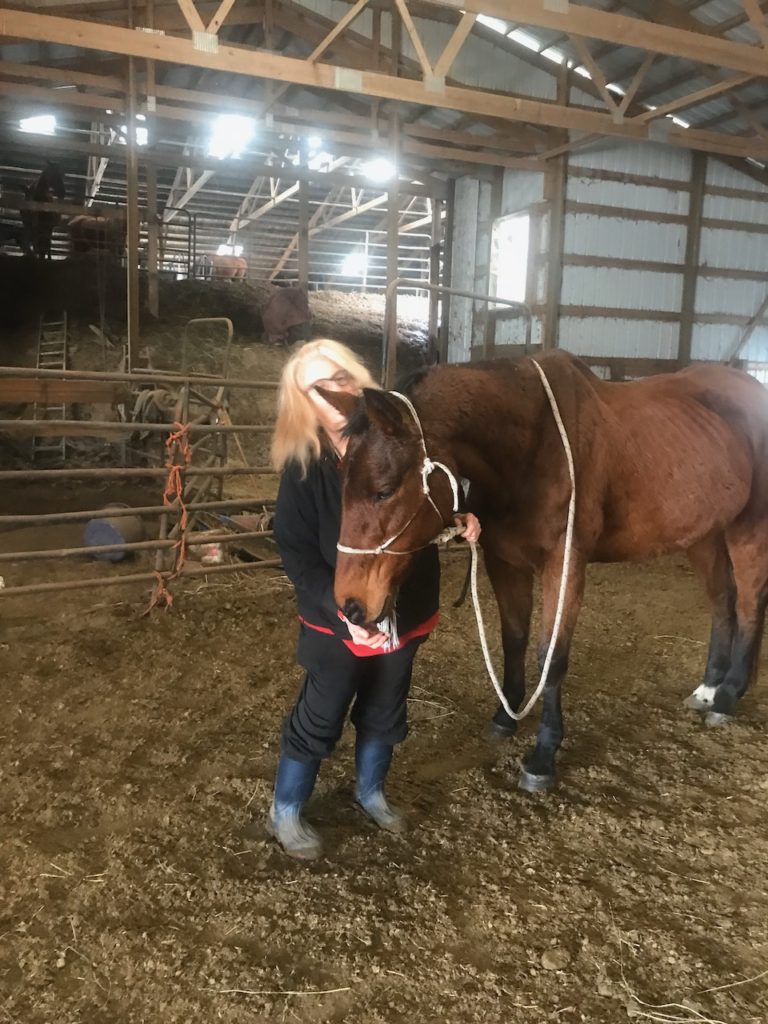
Unlearning lessons of the past
This lesson of trusting myself has been one I’ve been battling all my life, partly because I am a baby-boomer woman raised in an age when woman had no voice. My dad, although I believe he did love me, was overbearing and critical. The damage caused by my childhood has yet to be completely undone, may never be, but on this day desperate as I was for help, I gathered my confidence, choosing to believe in myself. I called the people with stock trailers and thanked them for their offer to help, then continued my search.
Answered prayers
Katie, a writer-friend who rides dressage offered to help. She had a big enough trailer, but she lives an hour away. That would have been a long day and I just couldn’t ask it of her. She promised to be my last resort then helped me look for someone who lived closer. I was worried I was asking too much, but I had to trust my experience with horses and held out for the safest and least stressful way to bring home a friend for Charlie.
Then Katie suggested I contact Ann, who trailers draft horses, rides dressage, and even massages horses…shockingly living only a few miles away from our farm. After explaining our situation, she agreed to help. My prayers were answered.
Now all we had to worry about was getting the trailer in and out of the muddy drive, getting a horse up the muddy hill while separating her from her barn mates, and getting her into a trailer. Horses trailer best when they are not alone—the herd mentality. Safety in numbers. But could we handle the extra work and expense of two new horses? Did we had enough hay to get three horses through the winter? Most importantly, would Greg agree?
We arrived at the farm with Ann and her trailer and I asked him that very question: should we take two horses?
TO BE CONTINUED…
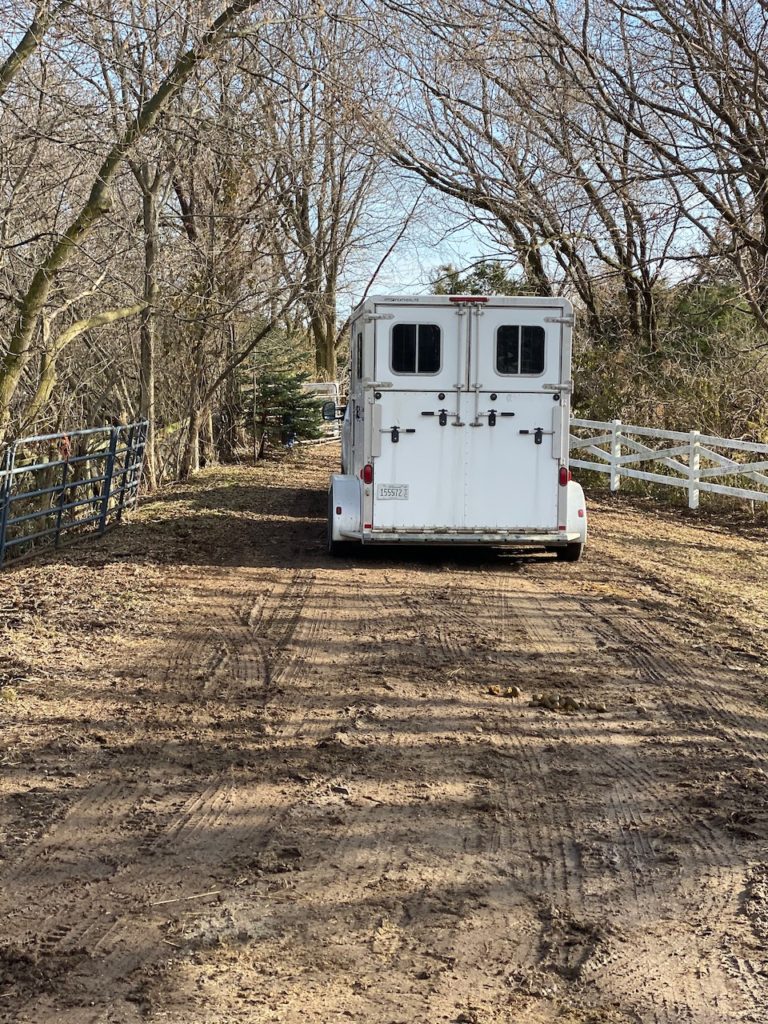
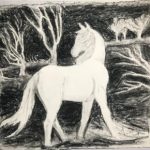
3 thoughts on “Charlie needs a friend – Part 1: How horses taught me to trust my gut”
Love your story Deborah
Thanks so much, Karen!